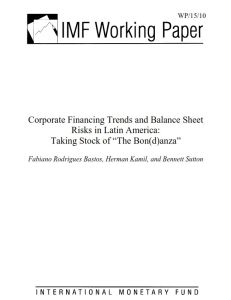Зарегистрируйтесь на getAbstract, чтобы получить доступ к этому краткому изложению.

Зарегистрируйтесь на getAbstract, чтобы получить доступ к этому краткому изложению.
Fabiano Rodrigues Bastos, Herman Kamil and Bennett Sutton
Corporate Financing Trends and Balance Sheet Risks in Latin America
Taking Stock of “The Bon(d)anza”
IMF, 2015
Что внутри?
Latin American companies have been enjoying a “bon(d)anza” in global debt markets. Should investors worry?
Recommendation
Companies in emerging economies are increasingly tapping global bond markets, and investors around the world have been enthusiastic buyers. While Latin American corporations have benefitted from this trend – especially because of their region’s low internal savings and investment rates – concerns over excessive leverage and currency risk are on the rise. Those old enough to remember the 1980s Latin American debt crisis will be particularly interested in this broad overview of more recent borrowing patterns from International Monetary Fund economists Fabiano Rodrigues Bastos, Herman Kamil and Bennett Sutton. getAbstract recommends their work to global investors, analysts and financial advisers.
Summary
About the Authors
Fabiano Rodrigues Bastos, Herman Kamil and Bennett Sutton are economists at the International Monetary Fund.


















Comment on this summary